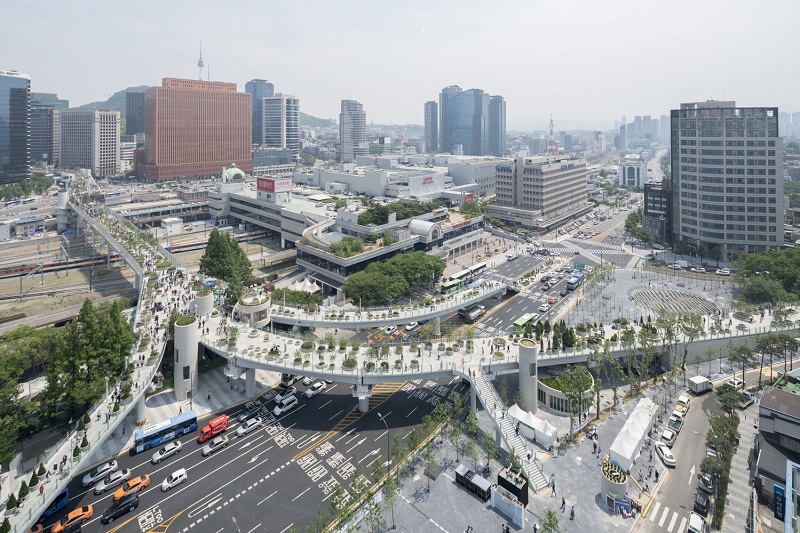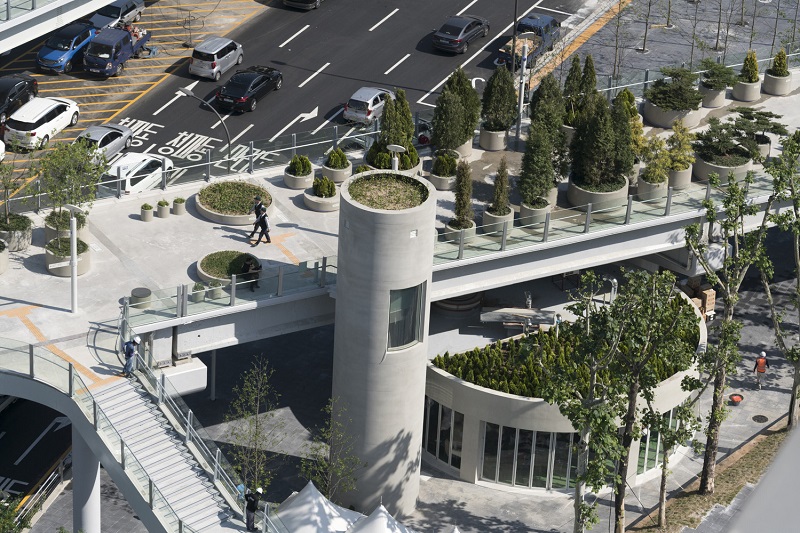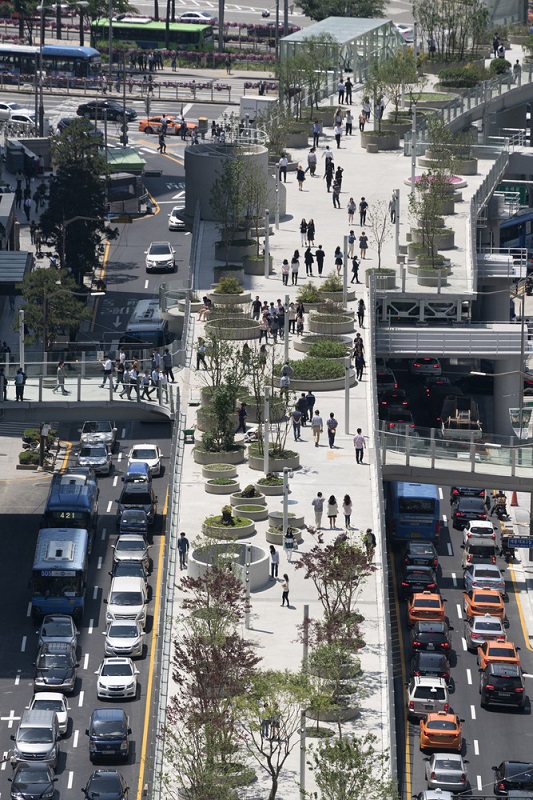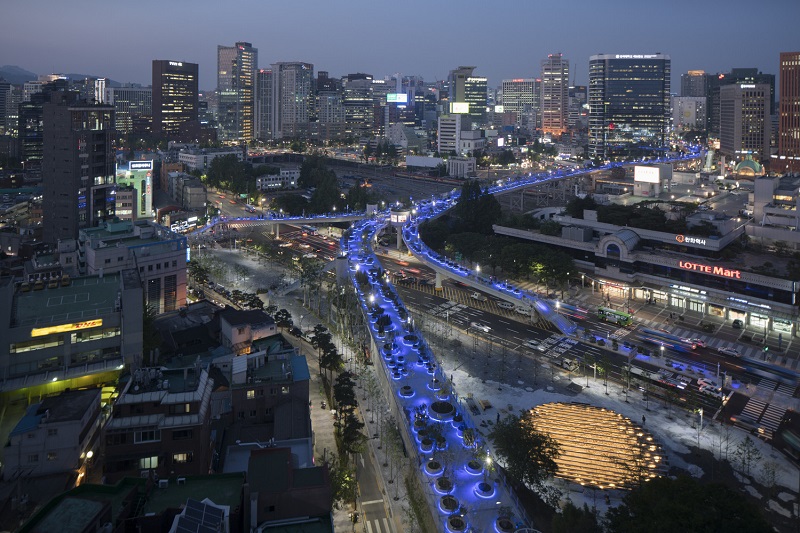Skygarden, Seoul
In May 2017, Skygarden opened in Seoul, South Korea. Officially named Skygarden, Seoullo 7017, the new public garden is a 983 m botanical floating walkway which has been transformed from a former city highway.
It is a linear park, containing more than 200 local species of trees, shrubs and flowers displayed in 645 tree pots. In total, the park will include 24,000 plants that will grow to their full heights over the next 10 years.
The project was designed and delivered by MVRDV who worked with architects, DMP and a dedicated team of experts including, Saman Engineering for structural consultation, Rogier van der Heide and Nanam ALD for lighting, Ben Kuipers and KECC on the landscape design and plant varieties.
MVRDV won the project commission in May 2015 and faced the challenge of transforming the existing steel and concrete overpass, elevated 16 m above street level.
The linear park was designed as a collection of small gardens, each one with its own composition, perfume, colour and identity. The landscape will change according to the seasons: the bright colours of leaves in autumn of the Aceraceae family (maples), the blossom of cherry trees and rhododendron in spring, the evergreen conifers trees in winter and shrubs and trees bearing fruit in summer.
New bridges and stairs connect the park with hotels, shops and gardens and the park will be accessible 24/7.
At night, the Skygarden is illuminated in blue lights in contrast to the bright city lights as the colour is considered more 'friendly' to nature. During festivals and celebrations, different colours can used.
Winy Maas, founding partner of MVRDV, said:
"Our design offers a living dictionary of plants which are part of the natural heritage of South Korea and now, existing in the city centre. The idea here is to connect city dwellers with nature, while at the same time also offering the opportunity of experiencing these amazing views to the Historical Seoul Station and Namdaemun Gate. Skygarden is an educational arboretum, a nursery for future species and one that in the future will act as a garden which can extend to other parts of Seoul as the plants grow and are transferred to new homes.
“They are planted in containers of different size and height and organised in groups of families. The families are ordered according to the Korean alphabet. This leads to surprising spatial compositions”.
Images and content courtesy of MVRDV.
Images © Ossip van Duivenbode.
[edit] Find out more
[edit] Related articles on Designing Buildings Wiki
Featured articles and news
One of the most impressive Victorian architects. Book review.
RTPI leader to become new CIOB Chief Executive Officer
Dr Victoria Hills MRTPI, FICE to take over after Caroline Gumble’s departure.
Social and affordable housing, a long term plan for delivery
The “Delivering a Decade of Renewal for Social and Affordable Housing” strategy sets out future path.
A change to adoptive architecture
Effects of global weather warming on architectural detailing, material choice and human interaction.
The proposed publicly owned and backed subsidiary of Homes England, to facilitate new homes.
How big is the problem and what can we do to mitigate the effects?
Overheating guidance and tools for building designers
A number of cool guides to help with the heat.
The UK's Modern Industrial Strategy: A 10 year plan
Previous consultation criticism, current key elements and general support with some persisting reservations.
Building Safety Regulator reforms
New roles, new staff and a new fast track service pave the way for a single construction regulator.
Architectural Technologist CPDs and Communications
CIAT CPD… and how you can do it!
Cooling centres and cool spaces
Managing extreme heat in cities by directing the public to places for heat stress relief and water sources.
Winter gardens: A brief history and warm variations
Extending the season with glass in different forms and terms.
Restoring Great Yarmouth's Winter Gardens
Transforming one of the least sustainable constructions imaginable.
Construction Skills Mission Board launch sector drive
Newly formed government and industry collaboration set strategy for recruiting an additional 100,000 construction workers a year.
New Architects Code comes into effect in September 2025
ARB Architects Code of Conduct and Practice available with ongoing consultation regarding guidance.
Welsh Skills Body (Medr) launches ambitious plan
The new skills body brings together funding and regulation of tertiary education and research for the devolved nation.
Paul Gandy FCIOB announced as next CIOB President
Former Tilbury Douglas CEO takes helm.


























